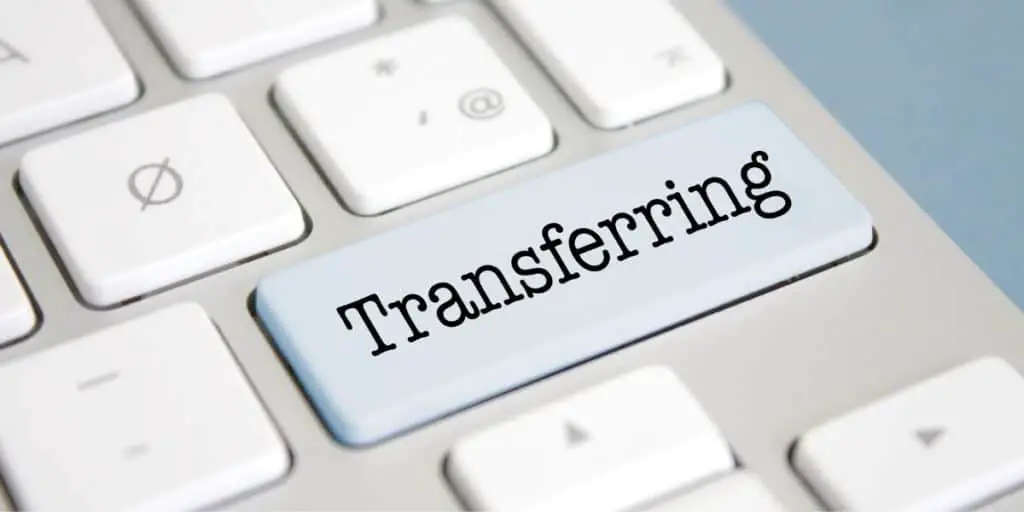Different investors might want to transfer their mutual funds and other assets held in their accounts for varying reasons. With mutual funds, although the transfer process is hassle-free for the most part, it can be time-consuming. If you’ve been wondering where the delays come from, this post is for you.
The reason why mutual funds take so long to transfer has a lot to do with the complexities of the transfer process. Even though the process is automated, it involves collaboration between two firms, which slows things down. Other individual-specific factors may further slow down transfers.
Read on for details on what it means to transfer mutual funds and why the process takes so long.
IMPORTANT SIDENOTE: I surveyed 1500+ traders to understand how social trading impacted their trading outcomes. The results shocked my belief system! Read my latest article: ‘Exploring Social Trading: Community, Profit, and Collaboration’ for my in-depth findings through the data collected from this survey!
Table of Contents
Understanding Mutual Fund Transfers
For clarity purposes, it makes sense to identify the kind of mutual fund transfer I’ll be addressing in today’s post before we get to the specifics of why it takes so long. Why? Because there are several types of mutual fund transfers, each with a different process.

The different types of mutual fund transfers include:
- Transferring mutual funds to a family member after the demise of the primary holder
- Transferring mutual funds from one person to another when both parties are alive (e.g., as gifts)
- Transferring mutual funds from one brokerage to another (AKA an account transfer).
Today’s post will be about transferring mutual funds from one brokerage to another because transferring mutual funds between two individuals when both parties are alive isn’t allowed, and transferring mutual funds to a family member after the demise of the primary holder is technically a transmission.
Now that we’re clear about what a “transfer” means in the context of today’s discussion, let’s get to the good stuff: why does it take so long?
Reason Why Transferring Mutual Funds Takes So Long
The Financial Industry Regulatory Authority (FINRA) estimates a waiting period of about a week for account transfers between broker-dealers. However, the wait is usually longer for account transfer where the delivering firm (AKA, where you’re moving your funds from) is not a broker-dealer. Thus, it can take several weeks to transfer mutual funds and other assets held in your account from one brokerage/mutual fund to another.
The reason it might take weeks to transfer mutual funds has a lot to do with the account transfer process.
Transferring funds between brokerages occurs through the Automated Customer Transfer Service (ACATS), a service regulated by the National Securities Clearing Corporation (NSCC). ACATS can be used to move mutual funds and other common assets such as stocks and bonds held in a customer’s account from one brokerage/mutual fund company to another.
Even though it’s automated, the transfer process can be time-consuming because it involves a lot of collaboration between two firms. It can also be slowed down by several factors, including where your mutual funds are held.
To clarify, let’s review the steps involved in a typical account transfer before reviewing the factors that may complicate the process.
Filling the Transfer Initiation Form (TIF)
The transfer process begins with you filling the Transfer Initiation Form (TIF) and submitting it to the receiving firm (AKA the firm you’re looking to move your account to). This form is issued by the receiving firm.
Once you fill out the TIF and submit it, the receiving firm enters your personal information (including your name, account number, and social security number) into the ACATS. After this entry, it doesn’t take long before an automated function notifies the delivering firm that an account transfer request has been submitted.
Transfer Validation by the Delivering Firm
The delivery firm has a legal obligation to safeguard your account against unauthorized transfers. As part of fulfilling that obligation, it’ll knock back a transfer request if some of the data submitted by the receiving firm doesn’t match what is on its records.
If your transfer request is declined, the receiving firm will have to correct the data to match what’s on record in the delivering firm. Alternatively, it’ll contact you to confirm whether the information you provided via the TIF form is accurate. Both measures can be time-consuming and can put a lag on the entire account transfer process.
Typically, the entire validation process takes three business days (from the day the receiving firm enters the transfer request into the ACATS). But if the information provided by the receiving firm doesn’t match what’s on the delivering firm’s record, it can take much longer.
Asset Review by the Receiving Firm
As soon as the delivering firm validates the transfer request, it furnishes the receiving firm with a list of all the assets held in your account. This, too, happens via the ACATS.
Upon receipt of the said list, the receiving firm reviews each asset to determine whether it can accept the account transfer. Rejection is a possibility here because brokers aren’t obligated in any way to accept all account transfers.
Most commonly, account transfers are blocked due to the receiving firm’s credit policy. For instance, your account may get rejected because the mutual funds held in it don’t meet the firm’s minimum equity requirements.
Factors That Might Complicate the Transfer of Mutual Funds
Several factors potentially complicate mutual fund transfers and subsequently increase the time it takes to complete the process. The most critical ones include:
- Your account details
- Where the funds are held (i.e., whether it’s a mutual fund company or a brokerage.)
- The type of transfer.
Let’s discuss each of these factors independently.
Account Details
By account details, I’m referring to whether you have active trades during the transfer process.
Some firms freeze accounts during the transfer process, meaning you can’t buy or sell any securities during this period. However, not all firms have this kind of policy, and in some cases, an investor will execute a trade shortly before initiating the transfer process. This complicates the transfer and causes delays.
To avoid delays, you might want to sell/buy any assets you’d like to before initiating the transfer process.
Where the Mutual Funds Are Held
If your funds are held in a firm that’s not a broker-dealer, expect to wait longer to complete the transfer process. Examples of such firms include mutual funds, banks, and credit unions.
It’ll take even longer if the account you’re looking to transfer from a non-broker-dealer requires a custodian. Examples of such accounts include custodial accounts for minors and individual retirement accounts.
Type of Transfer
There are two ways to transfer mutual funds and other assets held in your account. You can either sell your investments and transfer them as cash or transfer them “in-kind.” Depending on which of these two transfer types you choose, your wait could be shorter or longer.
Selling investments and transferring them as cash is more complicated because it comes with several transactions and tax implications.
With an “in-kind” transfer, you move all the investments held in your account “as is.” The receiving firm receives them at the market value, with no selling involved and zero tax implications to worry about. That’s why an in-kind transfer is arguably the fastest way to transfer mutual funds and other investments held in your account.
Important: You can transfer all kinds of mutual funds “in-kind,” except money market funds. These are usually sold and transferred as cash.
Author’s Recommendations: Top Trading and Investment Resources To Consider
Before concluding this article, I wanted to share few trading and investment resources that I have vetted, with the help of 50+ consistently profitable traders, for you. I am confident that you will greatly benefit in your trading journey by considering one or more of these resources.
- Roadmap to Becoming a Consistently Profitable Trader: I surveyed 5000+ traders (and interviewed 50+ profitable traders) to create the best possible step by step trading guide for you. Read my article: ‘7 Proven Steps To Profitable Trading’ to learn about my findings from surveying 5000+ traders, and to learn how these learnings can be leveraged to your advantage.
- Best Broker For Trading Success: I reviewed 15+ brokers and discussed my findings with 50+ consistently profitable traders. Post all that assessment, the best all round broker that our collective minds picked was M1 Finance. If you are looking to open a brokerage account, choose M1 Finance. You just cannot go wrong with it! Click Here To Sign Up for M1 Finance Today!
- Best Trading Courses You Can Take For Free (or at extremely low cost): I reviewed 30+ trading courses to recommend you the best resource, and found Trading Strategies in Emerging Markets Specialization on Coursera to beat every other course on the market. Plus, if you complete this course within 7 days, it will cost you nothing and will be absolutely free! Click Here To Sign Up Today! (If you don’t find this course valuable, you can cancel anytime within the 7 days trial period and pay nothing.)
- Best Passive Investment Platform For Exponential (Potentially) Returns: By enabling passive investments into a Bitcoin ETF, Acorns gives you the best opportunity to make exponential returns on your passive investments. Plus, Acorns is currently offering a $15 bonus for simply singing up to their platform – so that is one opportunity you don’t want to miss! (assuming you are interested in this platform). Click Here To Get $15 Bonus By Signing Up For Acorns Today! (It will take you less than 5 mins to sign up, and it is totally worth it.)

Conclusion
As we’ve seen throughout this post, the time it takes to transfer mutual funds has a lot to do with the complexities of the account transfer process. The waiting period may vary with the type of transfer, where the funds and other investments in your account are held, and whether you have active trades when you initiate a transfer.
To get a more accurate estimate of how long it’ll take to transfer your account, get in touch with the receiving firm. Most firms will readily address all your questions and concerns.
BEFORE YOU GO: Don’t forget to check out my latest article – ‘Exploring Social Trading: Community, Profit, and Collaboration’. I surveyed 1500+ traders to identify the impact social trading can have on your trading performance, and shared all my findings in this article. No matter where you are in your trading journey today, I am confident that you will find this article helpful!
Affiliate Disclosure: We participate in several affiliate programs and may be compensated if you make a purchase using our referral link, at no additional cost to you. You can, however, trust the integrity of our recommendation. Affiliate programs exist even for products that we are not recommending. We only choose to recommend you the products that we actually believe in.
Recent Posts
Exploring Social Trading: Community, Profit, and Collaboration
Have you ever wondered about the potential of social trading? Well, that curiosity led me on a fascinating journey of surveying over 1500 traders. The aim? To understand if being part of a trading...
Ah, wine investment! A tantalizing topic that piques the curiosity of many. A complex, yet alluring world where passions and profits intertwine. But, is it a good idea? In this article, we'll uncork...
